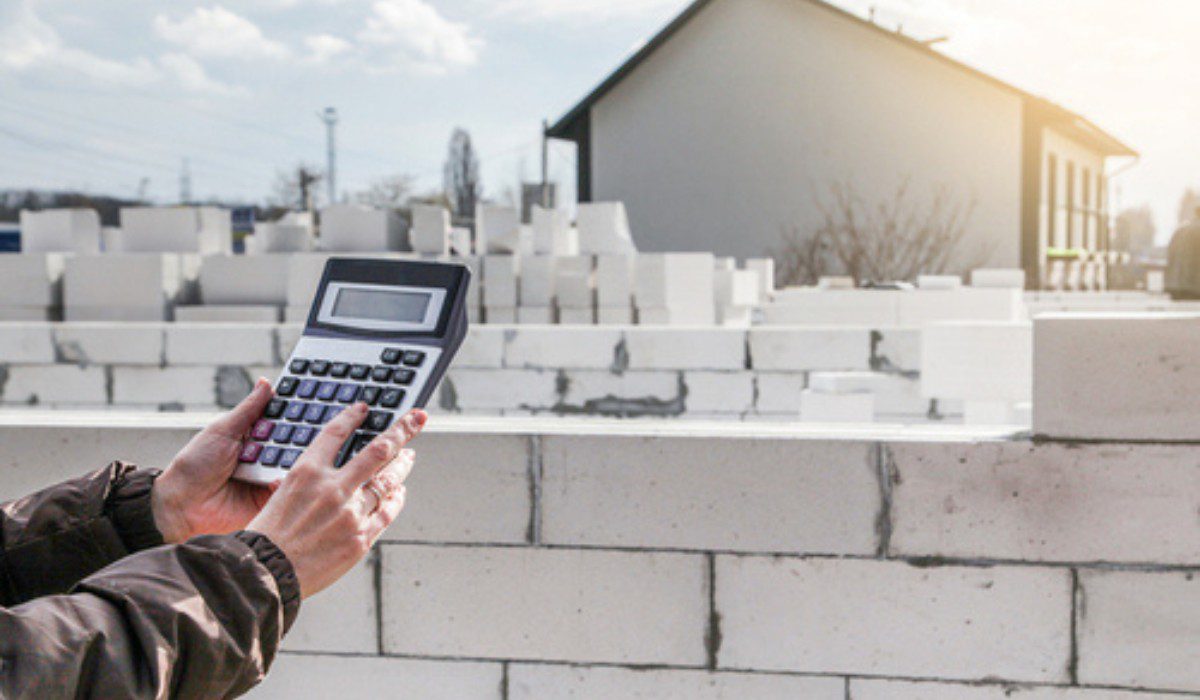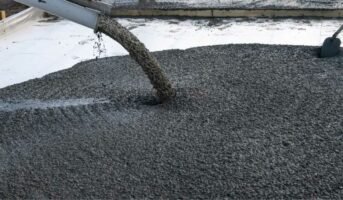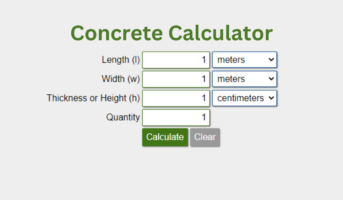When ordering materials for any concrete project, such as a new sidewalk or terrace, a concrete estimate is necessary. With the help of a concrete calculator, you may get an accurate picture of your requirements and the accompanying expenses. If you’ve never used a concrete calculator before, don’t stress; they’re simple to use. Learn the ins and outs of using a concrete calculator in your next endeavour with the help of this article.
All about stair stringer calculator
Concrete calculator: What is concrete?
Concrete is among the materials that are utilised in building on a widespread scale nowadays all around the world. It is made up of coarse and fine aggregate that is held together by a fluid mortar (cement paste) that becomes more rigid over the course of time. Sand, gravel, or crushed stone are typical aggregates, with portland cement and water serving as the paste.
Cement and water undergo a process known as hydration, which causes the aggregates to become more rigid and binds them together into a mass resembling rock. Concrete reaches around 99% of its ultimate compressive strength after 28 days have passed. However, this process of hardening continues for years, which ultimately results in concrete that is stronger over time.
See Also – slenderness ratio
Concrete calculator: Types of concrete?
Concrete may be prepared with various compositions, coatings, and performance qualities to cater to a comprehensive scope of requirements. The following is an example of some of the types:
-
Ordinary or plain concrete
This kind of concrete is quite popular. It’s composed of cement, sand, and coarse particles.
-
Lightweight concrete
The density of this particular kind of concrete is less than 1920 kg/m3, as measured. It has a thermal conductivity that is quite low.
-
High-density concrete
It is also often referred to as heavyweight. The density fluctuates between 3000-4000 kg/m³. The majority of its applications are found in nuclear power plants.
-
Reinforced concrete
The most significant kind is reinforced concrete. This kind of concrete has a very strong tensile strength due to the inclusion of steel in various shapes as reinforcement in the concrete.
-
Precast concrete
Concrete blocks that have been prefabricated are what is meant by the phrase “precast concrete.” They come in a variety of forms.
-
Prestressed concrete
Prestressed concrete is a specialised kind of reinforced concrete where the reinforcing bars are stretched before they are placed in the concrete.
-
Air-entrained concrete
Concrete that has air entrained in it is known as “air-entrained concrete,” and it is a kind of carefully formulated plain concrete. The air is compressed in the form of millions of particles that are dispersed evenly throughout the concrete.
-
Glass concrete
Concrete is made of glass, in which the recycled glass shards serve as the aggregate.
-
Rapid hardening concrete
This type of concrete sets very quickly and is often used to build underwater structures and repair roads.
-
Asphalt
Asphalt is created when aggregates and asphalt are mixed together. Used in the construction of roadways, airport runways, and embankments.
-
Lime concrete
Concrete made with lime has aggregates held together with the help of lime, which acts as a binder. It is utilised in areas such as flooring, domes, etc.
-
Roller compacted concrete
Concrete that has been roller compacted often contains just a trace quantity of cement. Most of its use is filler.
-
Stamped concrete
Concrete that has been stamped looks much like regular concrete but has a few subtle changes. It is used almost exclusively in architectural contexts.
-
Pumped concrete
This type of concrete is often used to construct tall structures.
-
Vacuum concrete
Concrete of this type is created by adding more water to the concrete recipe and then pouring the resulting slurry into the moulds.
-
Permeable concrete
Permeable concrete allows water to move freely through the material. Used in regions where there is a problem with stormwater.
-
Sprayed concrete
Concrete that is applied by spraying is produced in the same manner as conventional concrete, but it is laid down differently. It is pneumatically propelled onto a surface at a high velocity before being deposited there. It is used in the building of tunnels.
-
Ready-mix
Ready-mixed concrete is manufactured at concrete factories and then transported using concrete mixer vehicles to ensure that it may be delivered before the concrete has had a chance to harden.
Concrete calculator: Why do you need it?
When planning your next project, using a concrete calculator may be helpful in many different ways. You can simply estimate the concrete quantity you need and prevent over or underbuying by utilising a calculator designed specifically for concrete. In the long run, this may save you both time and money.
This calculator makes estimating the cost of concrete simple. Once you’ve determined how much concrete you’ll require (in bags) and how many pavers you’ll produce from it, simply enter the price per bag, and the calculator will provide you with the cost per concrete surface. There is a chance that there will not be enough concrete available, but this risk may be mitigated by purchasing a little bit more than the projected amount.
Concrete calculator: Considerations for using it
There are a few aspects to take into consideration before using a concrete calculator, including the following:
- You need to be aware of the dimensions of the space in which you will operate. Taking this into account will assist you in calculating the quantity of concrete needed to be purchased.
- You must be aware of the depth of the concrete that you will employ. This will assist you in calculating the amount of concrete that will be required for the pour.
- You will need to be familiar with the density of the concrete to accurately estimate the amount of concrete that will be required for the project.
When you have all this data, you can enter it into a concrete calculator to estimate how much concrete you’ll need.
Concrete calculator: How to use it?
Most construction projects need an estimate or calculation of the volume of concrete required for a certain feature, such as a slab, wall, supporting columns (both square and round), stairs, or curbs and gutters. The steps involved in using a concrete calculator are as follows:
- To begin, you will need to make a rough estimate of the amount of concrete that will be required. Determine the length, breadth, and height of your concrete slabs, as well as the amount of area that you like to pave.
- Find out how much everything weighs. The weight of your components may be computed using the area we just determined and the density of the concrete (which can be found on the bag; we gave a typical number, but it varies).
- To determine the amount of concrete produced in each bag, you must provide the bag’s dimensions.
- At last, you may indicate the waste ratio or the estimated amount lost due to spills, broken parts, and other undesirable occurrences. You can calculate the exact number of bags you need now.
Concrete calculator: Choosing the right concrete calculator
An abundance of concrete calculators may be found on the internet. Selecting a concrete calculator that caters to your particular project needs is crucial. For instance, if you’re laying a concrete slab instead of a concrete foundation, you’ll need a different calculator. Once you’ve located the appropriate calculator, you can estimate how much concrete you’ll need by entering the project’s dimensions and the slab’s desired thickness.
Concrete calculator: Useful tips
It is essential to measure everything precisely while working with a concrete calculator because of the nature of the tool. If you are unclear about the size of the work, it is preferable to overestimate the required concrete quantity rather than estimate it incorrectly. Not exact measurements might result in the loss of both time and money. When using the calculator, you also need to make sure that you take into account the depth of the concrete. The quantity of concrete you will need is directly proportional to the depth of the concrete.
FAQs
What is a concrete calculator?
When working with concrete, a calculator is a useful tool for estimating the amount of concrete needed. As such, it may assist in determining how much concrete will be required for a certain task.
How can I figure out the quantity of concrete by hand?
A general formula (length x breadth x height = volume) may be used to calculate the amount of concrete required for a project if you know the area's dimensions to fill.
How to use a concrete calculator?
You may use a concrete calculator by entering your project's length, breadth, and height and the slab's required thickness and width. Once you have this data, you can use it to make educated decisions about the scope and cost of your project.
Housing News Desk is the news desk of leading online real estate portal, Housing.com. Housing News Desk focuses on a variety of topics such as real estate laws, taxes, current news, property trends, home loans, rentals, décor, green homes, home improvement, etc. The main objective of the news desk, is to cover the real estate sector from the perspective of providing information that is useful to the end-user.
Facebook: https://www.facebook.com/housing.com/
Twitter: https://twitter.com/Housing
Email: [email protected]











